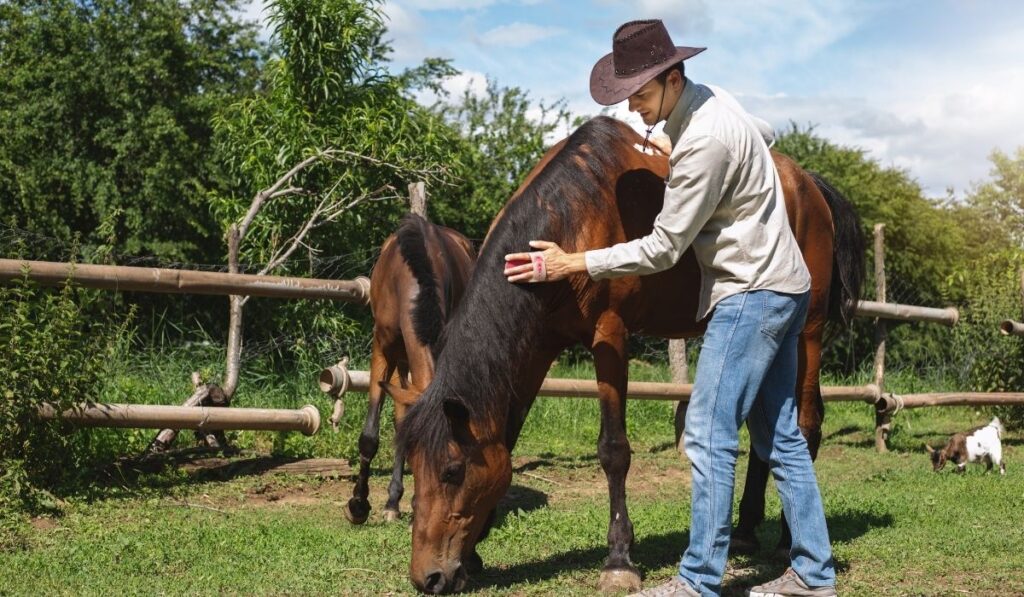
(A-D) Gene Set Enrichment Analysis (GSEA) for differentially expressed genes from the RNA-seq data shows a distinct upregulation of the interferon signaling pathway across the four pairwise groups (A) WT-MOCK vs WT-TGEV (B) TMEM41B-KO-MOCK vs TMEM41B-KO-TGEV (C) WT-MOCK vs TMEM41B-KO-MOCK (D) WT-TGEV vs TMEM41B-KO-TGEV. Data are represented as a percentage mean titer of triplicate samples relative to WT control cells ± S.D. P values were determined by two-tailed Student’s t-tests.

WT, wild-type KO, knockout MOI, multiplicity of infection kDa, kilodaltons DAPI, 4’,6-diamidino-2-phenylindole. PK-15-NTC: Transfection of pcDNA3.1 empty vector in WT cells PK-15-overexpression: Transfection of pcDNA3.1-TMEM41B vector in WT cells. RT-qPCR assay for the determination of (I) relative mRNA level of TMEM41B and (J) absolute mRNA level of the TGEV N gene. (I and J) Overexpression of TMEM41B in PK-15 control cells following infection with TGEV (MOI = 1). TMEM41B-KO-rescue: reconstituted TMEM41B in TMEM41B KO cells.

RT-qPCR assay for determination of (G) relative mRNA level of TMEM41B and (H) absolute mRNA level of TGEV N gene. (G and H) Rescue assays for WT, TMEM41B-KO and TMEM41B-KO-rescue cells infected with TGEV (MOI = 1). (F) TMEM41B KO and WT cells were infected with TGEV at different MOIs (0.001 and 1), TGEV N copy number was assessed by absolute quantitative real-time PCR. Plates stained with 1% crystal violet to view plaques. TMEM41B KO and WT cells were seeded into 24-well culture plates and infected with TGEV at different MOIs (0, 0.001, 0.01, 0.1, 1 and 10). (E) Viral quantification by plaque assays. (D) Western blot assay to detect the TGEV N protein expressed in TMEM41B KO and WT cells following infection with TGEV (MOI = 1) at 24 hpi. (C) Immunofluorescence assays for detection of the TGEV N protein in WT cells and five selected genes ( ANPEP, TMEM41B, LPP, TAX1BP1, BARHL12) KO cells following infection with TGEV (MOI = 0.1) at 24 hpi. (B) Quantification of virus infectivity (TCID 50) in culture supernatant collected 24 hpi from TGEV-infected (MOI = 0.1) WT and KO ( ANPEP, TMEM41B, LPP, TAX1BP1, BARHL12) cell lines. Log2(fold change) is the median log 2 ratio between normalized sgRNA count of TGEV challenged and mock-treated cell populations. Counts_TGEV3rd and Counts_TGEV5th represent the average values of the read counts from paired-end sequencing. Scatter plots compare sgRNA targeted sequence frequencies and the extent of enrichment in the transformed PK-15-Cas9 cells (mock-treated versus TGEV infected) for the third (TGEV3rd) and fifth (TGEV5th) rounds of TGEV screening.
EDUCATION REQUIRED FOR ANIMAL BREEDER VERIFICATION
(A) Verification of candidate genes enriched in the genome-wide CRISPR screen using a second, focused-CRISPR library screen. FACS, Fluorescence Activated Cell Sorting TGEV, Transmissible gastroenteritis virus sgRNA, small guide RNA. (E and F) Venn diagrams indicate the scope of overlapping enrichment in specific sgRNA targeting sequences for the three TGEV screening rounds amongst the top (E) ~0.1% and (F) ~0.5% of averaged sgRNAs reads. Log2(fold change) is the median log 2 ratio between normalized sgRNA count of TGEV challenged and mock-treated populations. Counts_TGEV1st/Counts_TGEV2nd and Counts_TGEV3rd are the average reads from the paired-end sequencing for each round. (B-D) Scatter plots showing sgRNA-targeted sequence frequencies and the extent of enrichment in transformed PK-15-Cas9 cells (mock-treated versus TGEV infected) in three rounds of TGEV screening (B) first, (C) second and (D) third, respectively. Surviving cells from each round of virus challenge were isolated, with the subsequent PCR amplification and sequencing of sgRNA. Transformed PK-15-Cas9 cells were either mock-treated or challenged with TGEV (MOI = 0.001). (A) Identification of TGEV host factors using the porcine genome-scale CRISPR/Cas9 knockout (PigGeCKO) library. Our study revealed that targeting TMEM41B is a highly promising approach for the development of broad-spectrum anti-viral therapeutics. Lastly, our data from a mouse infection model showed that the KO of this factor can strongly inhibit viral infection and delay the progression of a CoV disease.

Notably, our results also showed that cells lacking TMEM41B are unable to form the double-membrane vesicles necessary for TGEV replication, indicating that TMEM41B contributes to the formation of CoV replication organelles. We found that TMEM41B is critical for the internalization and early-stage replication of TGEV. Transmembrane protein 41B (TMEM41B) was found to be a bona fide host factor involved in infection by CoV and three additional virus families. To identify host factors required for CoV infection, we used α-CoV transmissible gastroenteritis virus (TGEV) as a model for genome-scale CRISPR knockout (KO) screening. Emerging coronaviruses (CoVs) pose a severe threat to human and animal health worldwide.


 0 kommentar(er)
0 kommentar(er)
